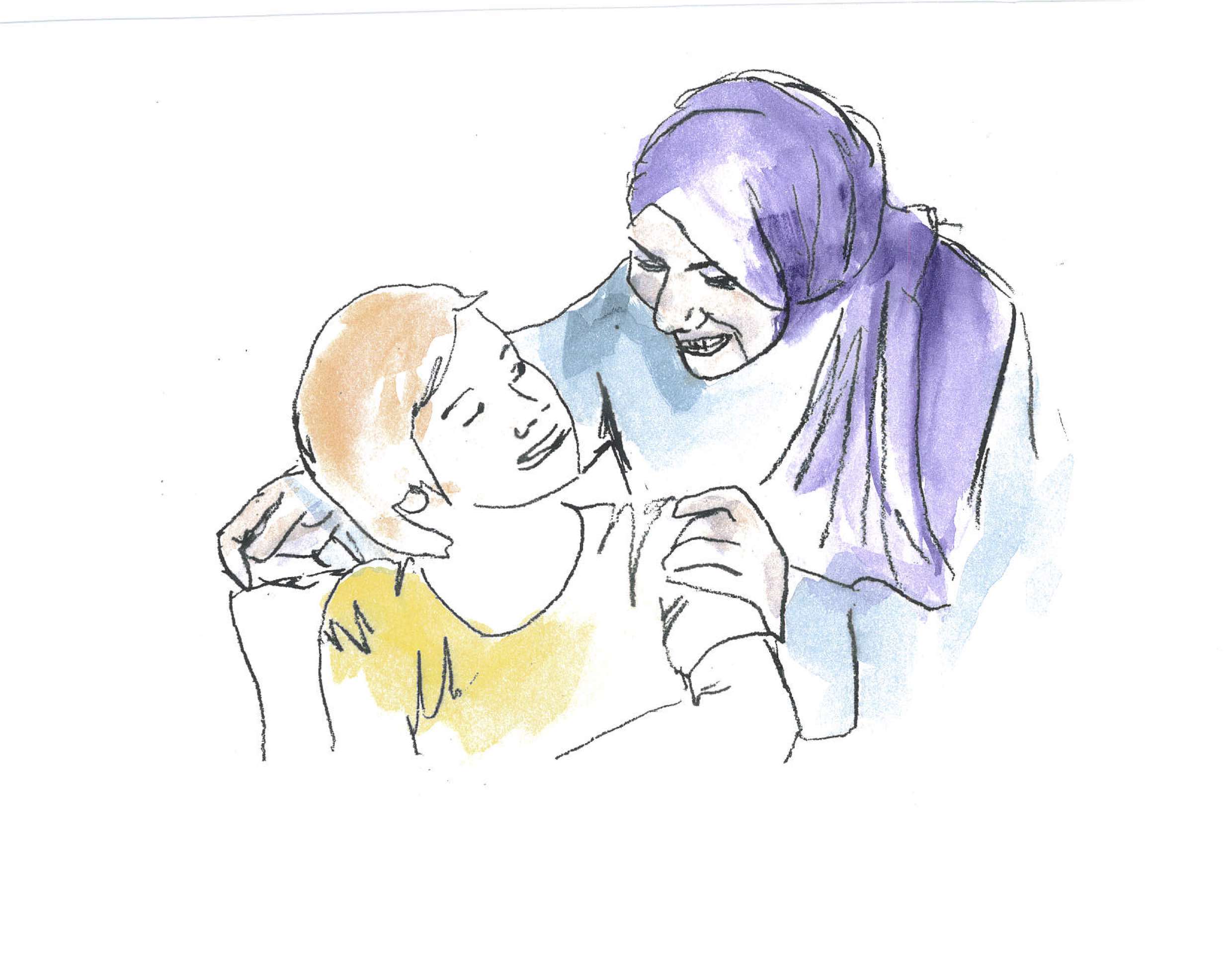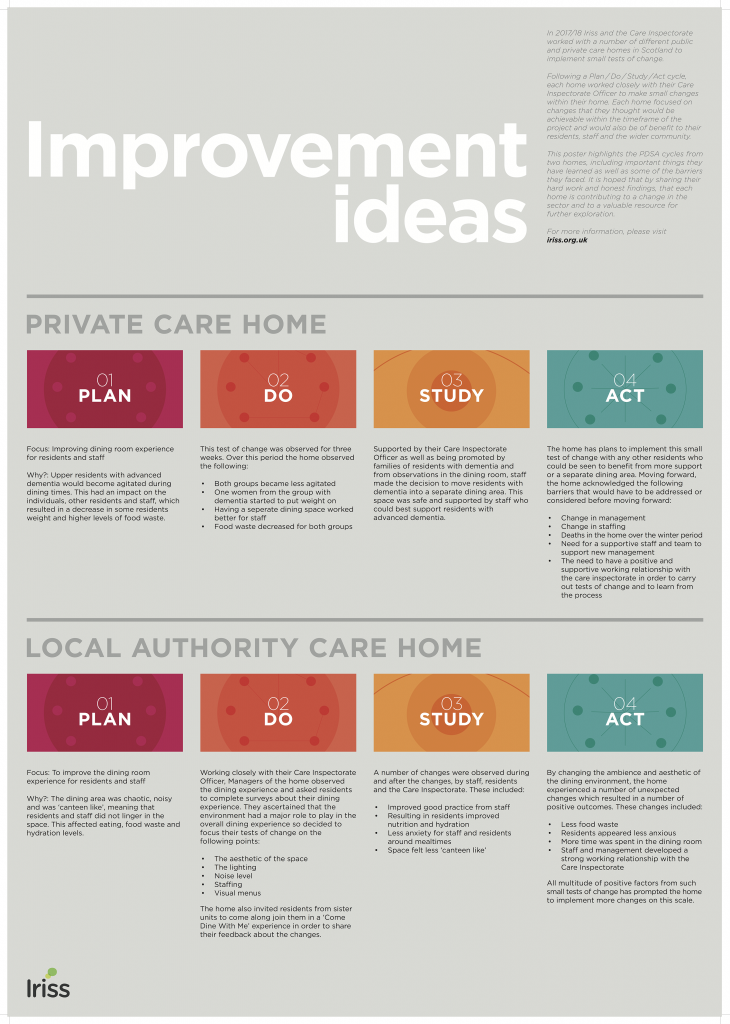Improvement Ideas
In 2017/18 Iriss worked closely with a number of managerial staff, and their Care Inspectorate Officers from different public and private care homes in Scotland.
Inspired by the ‘Working Together Guide‘ developed through previous Care Inspectorate collaborations, a group of participants from seven different care homes followed a ‘Plan Do Study Act’ cycle in order to design and action small tests of change.
Proposed changes ranged from; looking at resident and staff dining experiences to assessing internal monitoring and staff appraisals. Each home was supported to asses which changes they felt would be achievable and of greatest benefit to their residents, staff and the wider community.
Throughout the course of the year, the group met to share their learning from each stage of the cycle. This was a valuable opportunity for everyone involved to share their experiences with peers and to learn from, and support others who were in a similar position. Many of the participants explained that they were rarely given the opportunity to do this, and that out with the development of the tests of change, this was a valuable experience within itself.
Throughout the course of the year, many of the care homes experienced a number of barriers to their involvement in the project. These included; staffing, resident health issues and managerial changeovers. Despite this, in February 2018 Iriss hosted the final workshop which reflected on our collective learning throughout the process.
Key examples of this can be seen in the case studies and the infographic below.
Case Study Examples
The following case study example outline the dedication and hard work of those involved in the project in striving to make improvements within their homes.
Though this project has now drawn to a close, the skills and tools are actively being shared and used within the different care homes and their affiliated networks.
Public Care Home
Improvements we were trying to make:
Improve the dining experience … for the residents – older people, using the main dining room to make this area less like a canteen. Some residents use the upstairs dining room which is small and seats six residents, other residents prefer to eat in their bedrooms.
What actions did we take?
Observed the dining experience before any actions had been taken, asked residents to complete the survey form, we also asked residents from our sister units to complete surveys about their dining experience in their units. Looked at environment – lighting, table settings, noise level, traffic, staffing, visual menus, and invited residents from sister units for a ‘come dine with me’ experience. We asked all to complete feedback sheets so we could compare results/comments from both surveys.
What changed as result of actions taken?
Residents ate better, would sit longer chatting over drinks, staff more relaxed, initiating conversations with residents. Residents more relaxed about – where their zimmer is, sitting / no rushing back to lounge for seat. Staff having more pride in the environment, teamwork, improved communication.
Change was beneficial to:
Catering and care staff, residents. Improved good practice, resulting in residents improved nutrition and hydration, less anxiety over meal times and seats.
“Yes, the dining room was well lit and warm, the tables where set nice and there was music playing and it was not too loud”
Resident
“I liked it very much, it was a change of scenery and everyone was nice”.
Resident
Unexpected outcomes:
Less food wastage, residents less anxious, longer time spent in dining room. Working with Care Inspector to build a better relationship. Being more confident in saying that something isn’t working, and we need to change it.
Learning outcomes:
Setting goals and action plan, including all staff from the start, care inspection grades improved.
Working together guide cards:
Gave structure to meetings and gave guidelines for aims and objectives. Guidance on evaluation and outcomes was beneficial in keeping to the agenda and not going off set goals.
Summary of ideas
Illustration: Maddy Ross, 2018


